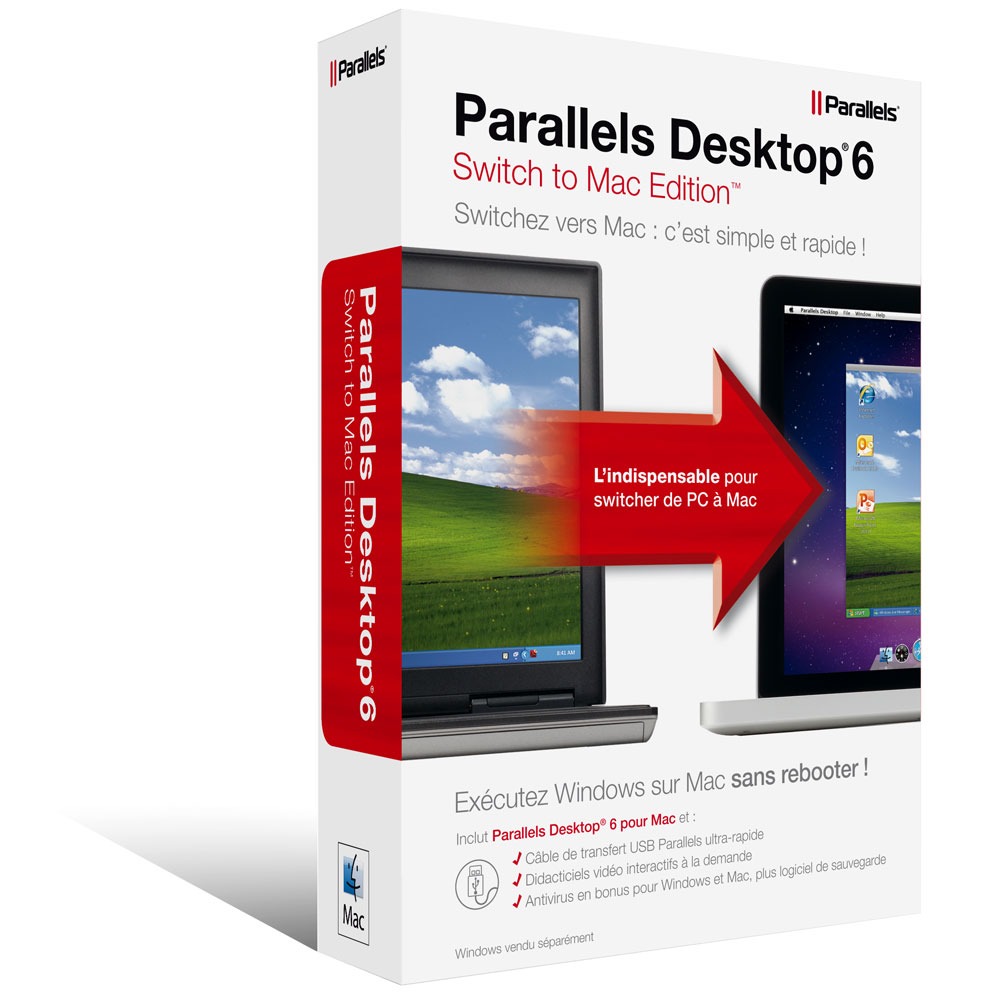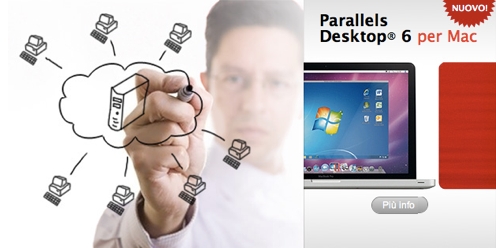Parallels 13 Desktop For MacOS
Hello everyone, how are you all doing today? I hope you are all having a great time so far. Have any of you heard of Parallels Desktop 13 for Mac? It’s an awesome software that allows you run Windows software on your MacOS devices, including Macbook’s and iMac’s.
Today we will highlight why you, your school or your business should definitely consider using Parallels Desktop 13 for Mac. This software rivals CrossOver for Mac because both of these programs allow you to run the latest Windows apps on your Mac. It’s as easy as clicking install and then choosing which programs you want to run by using virtual machines technology. We currently use Parallels Desktop 13 here at our Oxavi Group Inc offices on our Mac High Sierra Macbook’s and iMac’s because to us, it was the fastest program that allowed us to run our Windows program without much effort on our side. We are able to quickly Microsoft Visio and the likes on our Mac without a glitch so we recommend you to take a closer look.
Instantly run Windows Software on your Mac without even rebooting: [Try Parallels Desktop 13]
What Is Parallels Desktop 13 About?
Parallels Desktop 6 for Mac. End of Maintenance: Last date of Development Iterations for the product version. End of free email support: Last date the official technical support services will be provided for the product version.
- Parallels Desktop 13 Crack With Activation Key. Parallels Desktop 13.3.2 Crack Key for mac which is specially design for the Mac OS by company Parallels. This is the first software which develops for the Mac users allow them to use Windows on Mac.
- Parallels Desktop 14 for Mac was released, and since then I have been using it to run even and Windows, Linux, Mac Android machines in my iMac. Of producing a new VM to get pretty much any operating 14, the practice is becoming easier with every successive version of Parallels Desktop.
Parallels Desktop 13 lets you use Mac and Windows applications side-by-side (no restarting required). Launch and access Windows applications right from the Dock, and easily drag and drop and copy and paste between them. If you’re new to Mac, you can keep the familiar Windows experience in full screen.
Easily switch between Mac and Windows apps. Powerful performance lets you run Windows applications like Microsoft Office without compromise. Includes Parallels Toolbox, simplifying dozens of essential everyday tasks.
Powerful Performance
- Run it all without compromise Microsoft Office, Visual Studio, Quicken and QuickBooks for Windows, Access, Project, Autodesk Revit and Inventor, CorelDRAW, ArcGIS, Visio, Internet Explorer, Adobe Photoshop, and more.
Lightning Fast
- Graphic and resource hungry Windows applications run effortlessly without slowing down your MacBook, iMac, Mac mini, or Mac Pro.
Easy Setup
- Choose your existing Windows, Linux, Ubuntu, or Boot Camp installation or download Windows 10 on your Mac within Parallels Desktop and get started within minutes.
Switching from PC to Mac
- We make it easy to get all of your files, applications, browser bookmarks, and more from your PC to your Mac, just follow the setup assistant.
Works with Boot Camp
- Reuse your existing Boot Camp installation. Converting a virtual machine from Boot Camp is easier and more intuitive than ever.
Touch Bar Support for Windows Applications
- Add Windows applications to Touch Bar for instant access and customization.
Connect Devices
- Connect all your USB, Thunderbolt, and FireWire devices with Windows. Pair your Bluetooth and printer to work with both Windows and macOS.
One-Click Tuning
- Select productivity, games, design, or development, and Parallels Desktop for Mac will optimize your VM settings and performance for you.
Install Parallels Desktop 13 For Mac
Parallels Desktop 13 Screenshots
Parallels Desktop 13 Video
Remember to like our facebook and our twitter @macheatdotcom for a chance to win a free iPad Pro every month!
Parallels lets you run many different types of operating systems on your Mac. Because the developers knew that most Mac users will want to install at least a Windows OS, Parallels includes a Windows Express installation option that eliminates the need to babysit a Windows XP or Vista installation.
This guide will take you through the Windows Express installation, which creates a virtual machine on your Mac. We'll stop short of actually installing Windows, because the specific steps depend on whether you're installing Windows XP, Vista, Win 7, or Win 8.
What You Will Need
- Parallels Desktop for Mac v3.0 or later.
- The installation CDs for Windows XP or Vista.
- 20 GB free disk space. You can get by with less (I've performed an installation with as little as 8 GB of available disk space), but you'll appreciate the extra room if you later want to install more Windows applications or store larger Windows files than you originally intended.
- About an hour of free time, for the Windows Express setup and to actually install Windows.
The Parallels OS Installation Assistant
By default, Parallels uses the Windows Express installation option. This option creates a virtual machine with settings that will work just fine for most individuals. You can always customize the virtual machine parameters later if you need to.

The real advantage of Windows Express is that it's fast and easy; it does most of the work for you. It will collect most of the information that Windows needs by asking you some questions. Once you supply the answers, you can leave and then return to a fully installed version of Windows. This is a much more pleasant Windows installation than the standard. The downside is that the Windows Express method doesn't let you directly configure many settings, including type of network, memory, disk space, and other parameters, although you can always tweak these and other settings later.
Using the OS Installation Assistant
- Launch Parallels, usually located at /Applications/Parallels.
- Click the ‘New’ button in the Select a Virtual Machine window.
- Select the installation mode that you want Parallels to use.
- Windows Express (recommended)
- Typical
- Custom
- For this installation, select the Windows Express option and click the ‘Next’ button.
Configuring a Virtual Machine for Windows
Parallels needs to know which operating system you plan to install, so it can set the virtual machine parameters and collect the information necessary to automate the installation process.
Configure the Virtual Machine for Windows
- Select the OS type by clicking the dropdown menu and choosing Windows from the list.
- Select the OS version by clicking the dropdown menu and choosing Windows XP or Vista from the list.
- Click the ‘Next’ button.
Entering Your Windows Product Key and Other Configuration Information
The Parallels Windows Express installation option is ready to collect some of the information it needs to automate the installation process.
Product Key, Name, and Organization
- Enter your Windows product key, which is usually located on the back of the Windows CD case or inside the Windows envelope. The dashes in the product key are entered automatically, so just enter the alphanumeric characters. Be careful not to lose the product key, because you may need it in the future if you need to reinstall Windows.
- Enter your name by using the alphanumeric keys and the space key. Do not use any special characters, including apostrophes.
- Enter your organization's name, if appropriate. This field is optional.
- Click the ‘Next’ button.
Name That Virtual Machine
It's time to specify a name for the virtual machine that Parallels is about to create. You can choose any name you like, but a descriptive name is usually best, particularly if you have multiple hard drives or partitions.
In addition to naming the virtual machine, you will also choose whether your Mac and the new Windows virtual machine should be able to share files.
Parallels Desktop 6 For Mac System Requirements

Pick a Name and Make a Decision About Sharing Files
- Enter a name for Parallels to use for this virtual machine.
- Enable file sharing, if desired, by placing a check mark next to the 'Enable file sharing' option. This will let you share files in your Mac's home folder with your Windows virtual machine.
- Enable user profile sharing, if desired, by placing a check mark next to the ‘Enable user profile sharing’ option. Enabling this option allows the Windows virtual machine to access the files on your Mac desktop and in your Mac user folder. It's best to leave this file unchecked and manually create shared folders later on. This provides more protection for your files and lets you make file sharing decisions on a folder-by-folder basis.
- Click the ‘Next’ button.
Performance: Should Windows or OS X Get Top Billing?
At this point in the configuration process, you can decide whether to optimize the virtual machine you're about to create for speed and performance or allow applications to have dibs on your Mac's processor.
Decide How to Optimize Performance
- Select an optimization method.
- Virtual Machine. Choose this option for the best performance of the Windows virtual machine you're about to create.
- Mac OS X applications. Choose this option if you prefer your Mac applications to take precedence over Windows.
- Make your selection. I prefer the first option, to give the virtual machine the best performance possible, but the choice is yours. You can change your mind later if you decide that you made the wrong choice.
- Click the ‘Next’ button.
Start the Windows Installation
All of the options for the virtual machine have been configured, and you've supplied your Windows product key and your name, so you're ready to install Windows. I'll tell you how to start the Windows installation process below, and cover the rest of the process in another step-by-step guide.
Begin the Windows Installation
- Insert the Windows Install CD into your Mac's optical drive.
- Click the ‘Finish’ button.
Parallels Desktop For Mac 12
Parallels will start the installation process by opening the new virtual machine you created, and booting it from the Windows Install CD. Follow the onscreen instructions to install Windows.